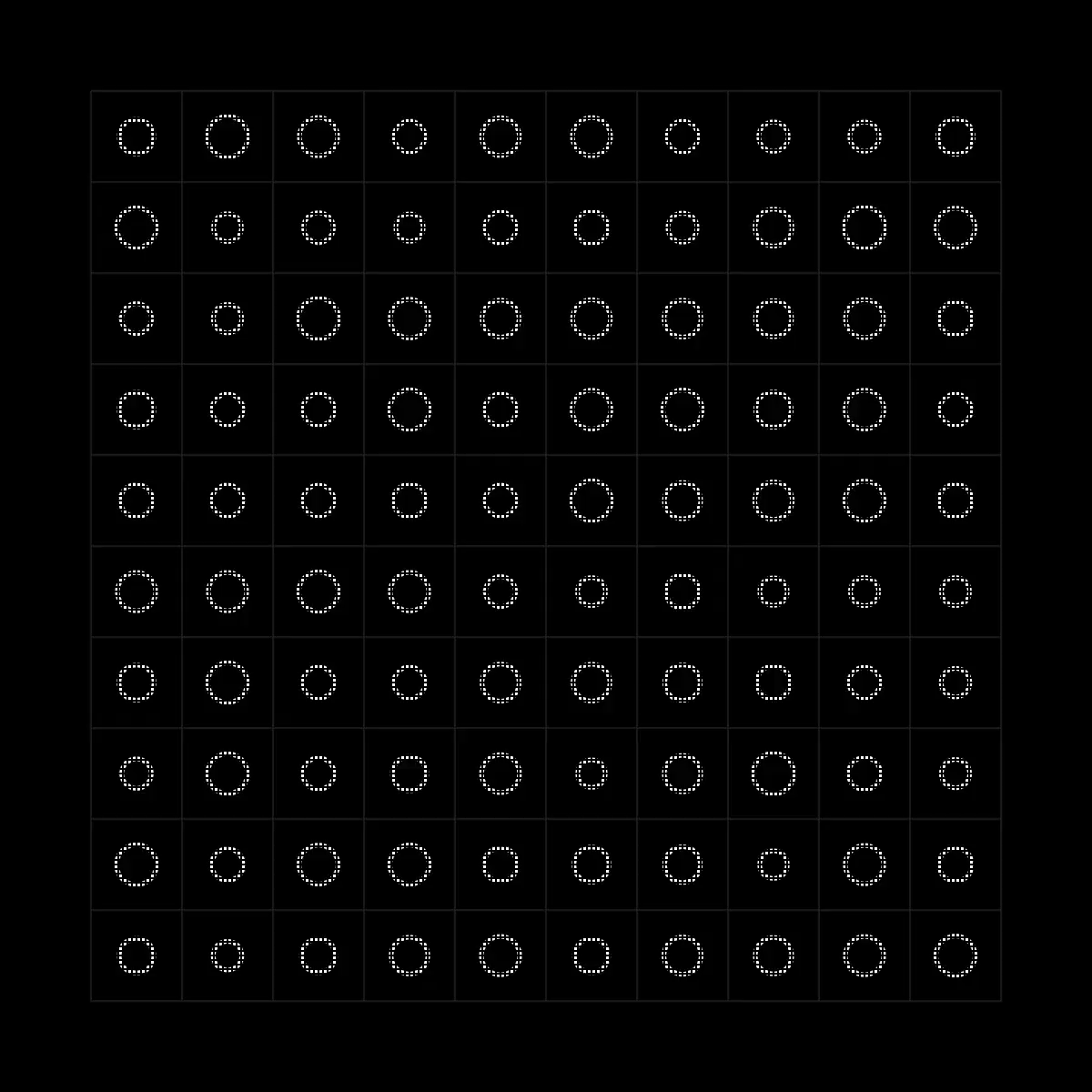Gaussian Timepieces aim to symbolize the relationship between blockchain time and our perception of time. The timepieces are inspired by the statistical patterns of block time on the Ethereum blockchain and aim to capture the stochastic and variable nature of blockchain time. These serve as both timers and data visualizations, offering a unique way to represent time on the blockchain.
The timepieces are EVM generated, and their appearance and features are based on what’s called a “Dynamic dial.” 3 parameters, block timer, amount of ETH held in the owner's wallet, and the number of on-chain NFTs from various projects held in the owners's wallet. They come in five different durations, ranging from 2 to 32 blocks, and are distinguished by the number of elements on their faces, indicating the variability of blockchain time.
Owners have the freedom to modify and adapt their timepieces, and there is a focus on representing cross-project ownership through visual elements on the timepieces.
“Fun feature: it’s now an anachronistic clock, because Ethereum’s post-Merge timing is precise at 12s per block; when I did this, it was Gaussian, around 13s mean. :)”
The notches on the timepiece’s bezel (and elements inside the face) mark the number of on-chain projects a collector has and the total number of tokens from those projects — the contract calls 15 other contracts of prior on-chain works (Avastars, etc.) to build the piece in SVG (so the bezel is “built for each wallet” dynamically).
Dan from OpenSea has a nice example as he has been collecting for a long time, holding 11 of those 15 prior projects, and Barthazian has 267 total tokens!











